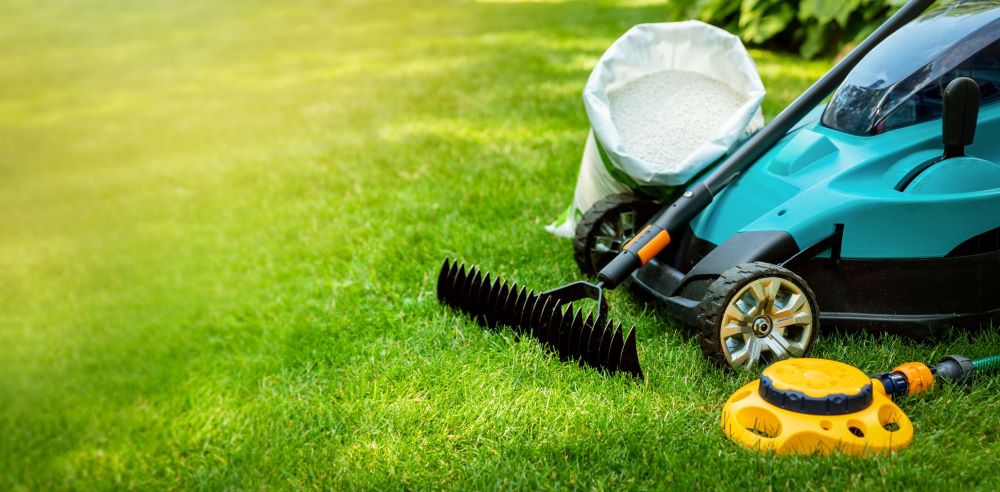Revive your parched lawn, add a layer of wildfire defense
A green lawn does more than boost the appearance of your property. It also adds a fire-protective buffer around your home, helping carry you through the rest of this fire season and getting you ready for the next. Healthy lawns also help control runoff as we move into rainier months. They even can discourage property crime, since burglars are less likely to target homes that appear meticulously maintained.

Dormant or dead?
It's not always easy to tell. Gardening experts say try the "tug test." Grab a handful of grass and pull. It if comes up easily, it's dead. But, if you feel quite a bit of resistance, it's probably dormant. Another clue: If the color looks fairly consistent (that is, greenish-brown or straw colored over a large area) rather than mottled patches (green clumps amid the brown), it's likely dormant.
Restoring your lawn to a well-maintained appearance
If your lawn is dormant, seasonal rain and its usual nudge of fall fertilizer will revive it. But if it's mostly dead, you'll need to overseed – a mini-version of planting a whole new lawn.
Here's how:
- Start with dethatching to remove the dead grass. Use a rake if the area is small, a power thatcher if it's large. You want to make sure the new grass seed will have good contact with the soil.
- For hard-packed soil, you may want to go a step further with core aeration that removes plugs of soil from your lawn so water can soak in and seeds can more easily take root. (You can rent both power thatchers and core aerators at your local garden center.)
- Mow the lawn shorter than normal to help ensure good seed-to-soil contact.
- If you're unsure about your soil's condition, buy a test kit at your garden center to determine its pH. It may benefit from an application of lime to hit that perfect balance (6.0 to 6.8) before seeding.
- Apply a thin layer – only about 1/8 inch – of peat moss as a top dressing to help hold moisture and improve germination.
- Buy the right blend of seed. With Washington and Oregon's microclimates, there's no one-size-fits-all formula (ask your garden center for advice). In general, buy the best seed you can afford (nothing less than a germination rate of 85% and a mixture that's tested 99% weed free). Overseed in a crisscross pattern and rake lightly afterward to settle the seeds into the peat moss.
- Apply an organic fertilizer. (Your earlier soil test, along with the experts at your garden center, can help point you to the right formula.) You also can look for fertilizers labeled as "starters."
- Keep the new sections damp while seeds sprout. If rain is spotty, you'll need three or four light daily sprinklings until you see new grass. Then, you can gradually increase intervals between waterings to encourage the roots to grow deeper into the soil.
Lawns don't always come in evenly, so you may need to repeat steps 6 and 8 to get the last stubborn patches to come in. But if you start now, you'll likely have time to overseed and touch up before the average first freeze hits neighborhoods in Washington and Oregon.
Share on social media